What Are the Best Farm Dogs?
Unless you are a student of agricultural history and trends, you might not know that a substantial number of domestic dog breeds were originally developed as working farm dogs. We tend to think of dogs primarily as friends, companions or family members, and not as essential components of the process by which we obtain our food. Prior to the start of the Industrial Revolution in the 18th century, however, every animal raised in rural and farming communities — including fowls, livestock and dogs — played practical, integral roles in the food system.
When we mention farm dogs, you may think specifically of medium or large canines who herd sheep, cattle, or pigs. During a more agrarian era, dogs of all sizes and breeds found employment on farms. Despite the fact that most of us live at several degrees from farm life, the variety of farm dogs and their functions has not changed. When we try, then, to determine or narrow down the best farm dogs, we need to take under consideration both the range of dog breeds and the tasks required of them. The general categories of working dog jobs include:
- Guarding livestock
- Herding farm animals
- Ratters / pest control
- Multipurpose dogs
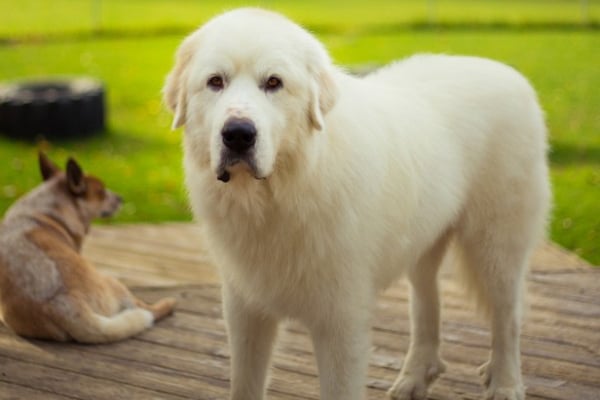
A Great Pyrenees is among the best farm dogs. Photography by Shutterstock.
Livestock guardians
Thinking of farm dogs may immediately evoke images of our first two categories; specifically large, hardy dogs who monitor and protect vulnerable livestock. Livestock farming encompasses a wide range of birds and beasts raised for the meat, milk, eggs, wool or skin. A farmer or rancher cannot possibly watch flocks or herds while attending to all of their other duties.
For centuries, dogs of all sizes, types, and breeds have dedicated themselves to caring for cattle, sheep and goats. The best guard dogs are those who blend in effectively with their charges, defend them from predators, and be attentive day or night as required. Breeds involved in livestock protection tend to cut a large and imposing figure, possess a stentorian bark, and depend on either intimidation or surprise in their work.
Notable livestock guardians include:
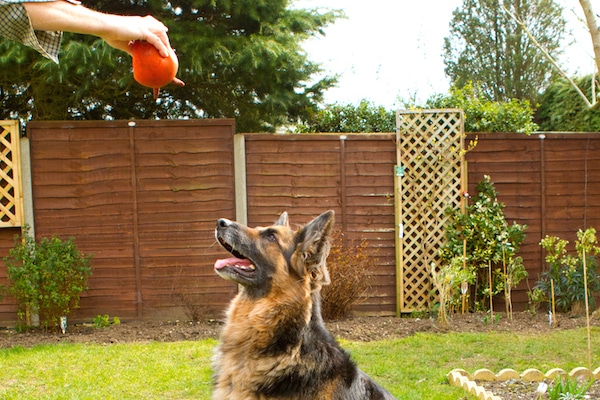
German Shepherds were bred to be farm dogs, or herding dogs specifically. Photography by smikeymikey1 / Shutterstock.
Herding dogs
Another common type of canine associated with bucolic life is the herding dog. The term may conjure pastoral poems and idyllic landscape paintings that depict a lone shepherd overlooking a field under a summer sky with a trusty dog by his side. It’s a misnomer to associate them exclusively with cattle or sheep, though, since their herds and flocks are just as likely to be populated by chickens, ducks, goats, llamas, and pigs.
Effective herding dogs are capable of leading these farm animals out to pasture in the morning, and back to the safety of the pen or coop in the evening. Highly trained farm dogs respond without hesitation to commands, gestures, and sounds. Dogs who are good herders are both agile and alert, but don’t have to be huge. We may think of Corgis as amusing companions and pets, but they were originally developed in Wales for their skill in herding. They could encourage bulky ungulates to get a move on while their small stature helped avoid the kick of a hoof.
Among the best herding dogs:
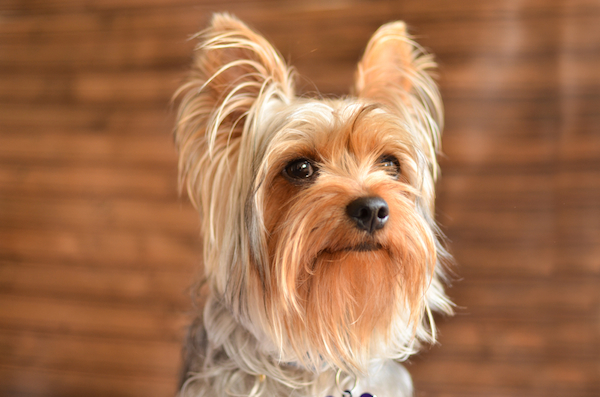
Yorkshire Terriers were originally bred to be farm dogs. Photography by By Yazmin Mellado / Shutterstock.
Rat dogs
As vital as they are to livestock farming, protection and herding are not the only jobs that working farm dogs hold. Dogs are just as important on farms that produce fruits, vegetables, and grains. Even on livestock farms, risks to productivity and inventory are not limited to live animals. Farm dogs can be critical to controlling pest populations. An unwelcome infestation — and really, what kind of infestation is welcome? — might destroy a crop in the field, steal harvested foodstuffs in storage, or devour eggs.
Keeping farm products safe from pests is largely the province of small, energetic, and tenacious dogs. Like the term “cattle dog,” to call these dogs “ratters” is to sell them short. Yes, they are expert at tracking and catching rodents, rats and mice primarily, but also badgers, ferrets, possums, raccoons, stoats, and so forth. Many of the best ratting dogs were developed throughout the United Kingdom in the 18th and 19th centuries, and among them are some of the most popular modern domestic breeds.
The best ratters and pest control dogs include:
Some of the best farm dogs are all-purpose
Some dogs herd, some dogs offer protection, while yet others still are experts at loss-prevention and rodent control. Surely that covers the gamut of what dogs do on farms! Wrong! Many of the best farm dogs, from ancient times to the present, have been capable of handling these tasks and more. Large and giant dog breeds, in particular, have proven adept at herding, guarding, and pest control.
Even tasks we typically associate with pack animals like mules, horses, and oxen, were, in less civilized ages, done by dogs. Fortunately, these days, carting is more of an occasional and specialist sport than a full-time occupation. Dogs who once served as draught animals included Newfoundlands, Saint Bernards, and the Swiss Mountain Dog family (Appenzell, Bernese, Entelbucher, and Greater Swiss Mountain Dogs).
Urban farms need dogs, too!
Urban farming has taken off in recent decades as organizations and individuals have attempted to address a growing need for fresh produce in cities that doesn’t have to be trucked in over large distances. These farms also serve the demand of restaurateurs to increase their focus on locally sourced fruits and vegetables, and supply community supported agriculture services in delivering food to people interested in circumventing chain grocery stores. Dogs are present on some of these urban farms as well, mostly serving in companion roles.
A further variant, hobby farming, has also exploded in popularity. Hobby farms have sprung up everywhere from small yards in urban areas, where they replace otherwise useless lawns, to rural plots maintained by weekend and part-time gardeners. In places like these, dogs of all sizes are still performing slight variations on their traditional roles, from pest control and crop protection to herding backyard chickens. Dogs have been employed, trusted, and loved on farms as long as there have been farms. Long may it remain so!
Top photograph: Shutterstock
Read more:


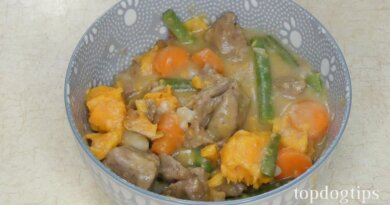
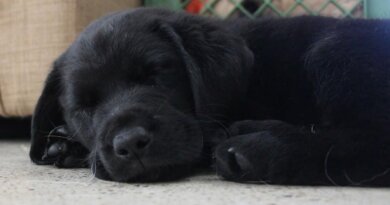

erectile dysfunction pills: https://edpills.pro/#
darkweb marketplace darknet market links